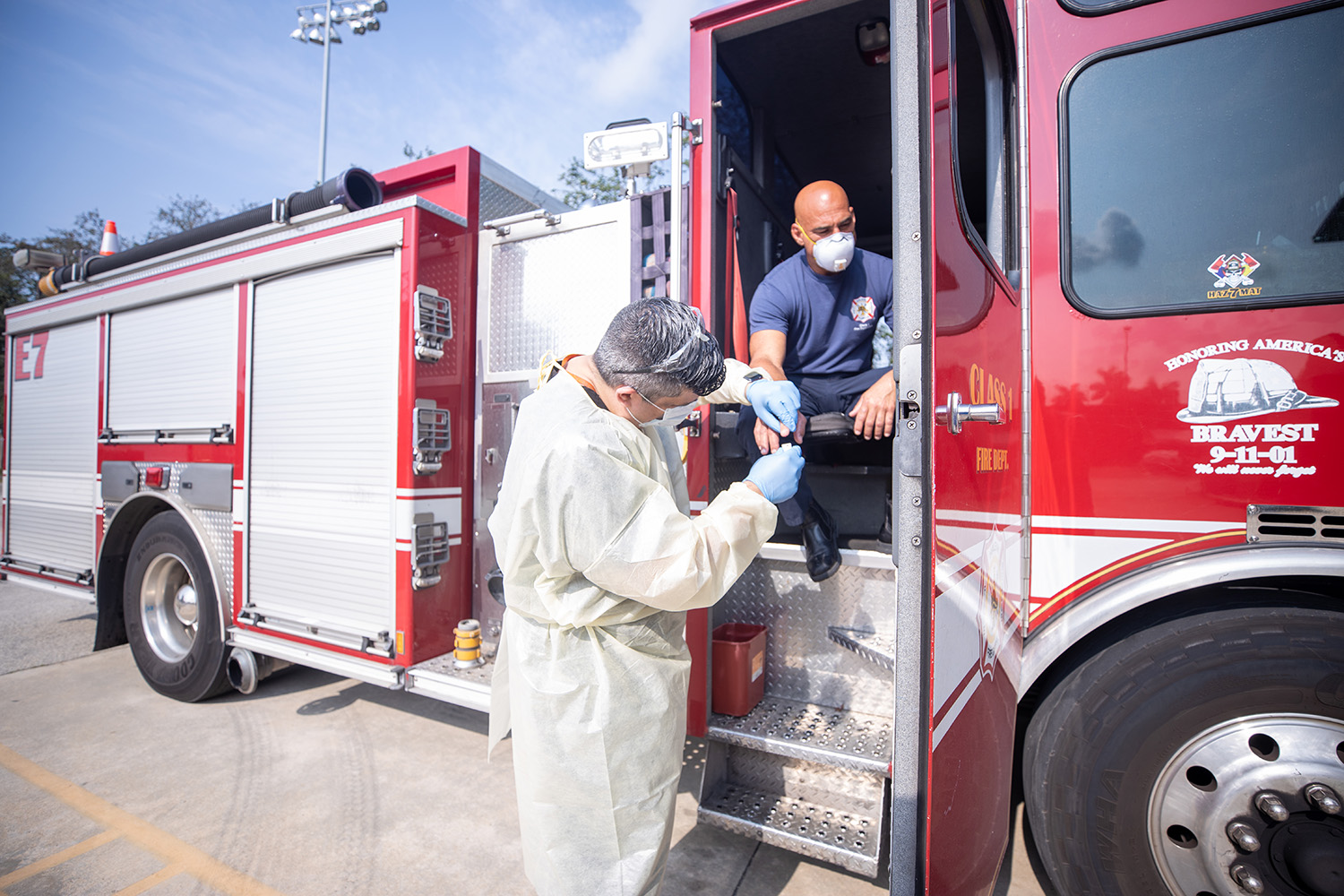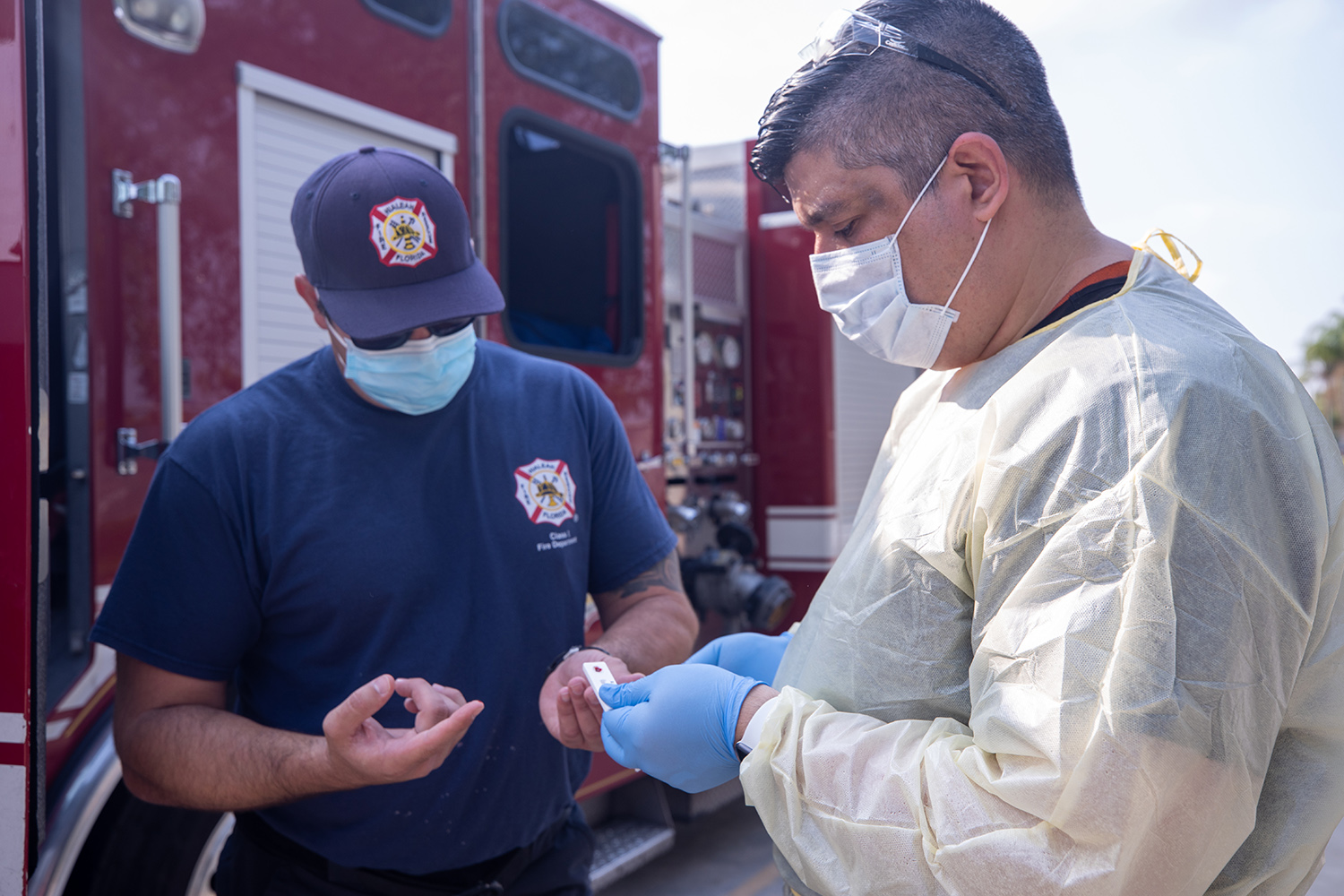In response to the pandemic, the Firefighter Tracking, Resources, Assessment of COVID-19 Epidemiology (F-TRACE) was established and led by Alberto J. Caban-Martinez, D.O., Ph.D., M.P.H., deputy director of the Firefighter Cancer Initiative at Sylvester, along with Natasha Schaefer Solle, Ph.D., RN, and Director Erin Kobetz, Ph.D., M.P.H..

They are co-authors of a paper, published in August, in the international peer-reviewed journal Occupational and Environmental Medicine . This research is first in the U.S. to document the seroprevalence of SARS-CoV-2 in a first-responder workforce.
“Prior research has suggested that first responders are at high risk of exposure to coronavirus due to the frequent and multiple encounters with members of the general public,” said Dr. Caban-Martinez, associate professor of public health sciences in the Division of Environment & Public Health at the Miller School of Medicine. “Understanding risk factors and mitigators of exposure to coronavirus are important steps to controlling the spread of the virus, particularly for our first responders.”

In April, the City of Hialeah Fire Department was the first in the country to undergo finger-prick coronavirus antibody screening using a rapid immunoglobulin (Ig)M-IgG combined point-of-care lateral flow immunoassay to estimate the prevalence of the virus that causes COVID-19. Over a two-day period, 203 firefighters/paramedics were tested. Of those, 18, or 8.9%, tested positive for the antibodies, which was low compared to the community infection rate, which was double that.
Dr. Caban-Martinez says the discrepancy is likely due to the regular and consistent use of personal protective equipment and decontamination practices adhered to by the fire department workers.
Over several months, numerous fire departments underwent antibody testing.
As part of a multi-prong approach to COVID-19 surveillance and control for first responders, the F-TRACE project will continue to provide firefighters/paramedics with the resources and guidance to minimize the burden of COVID-19 within their workforce and the communities they serve.